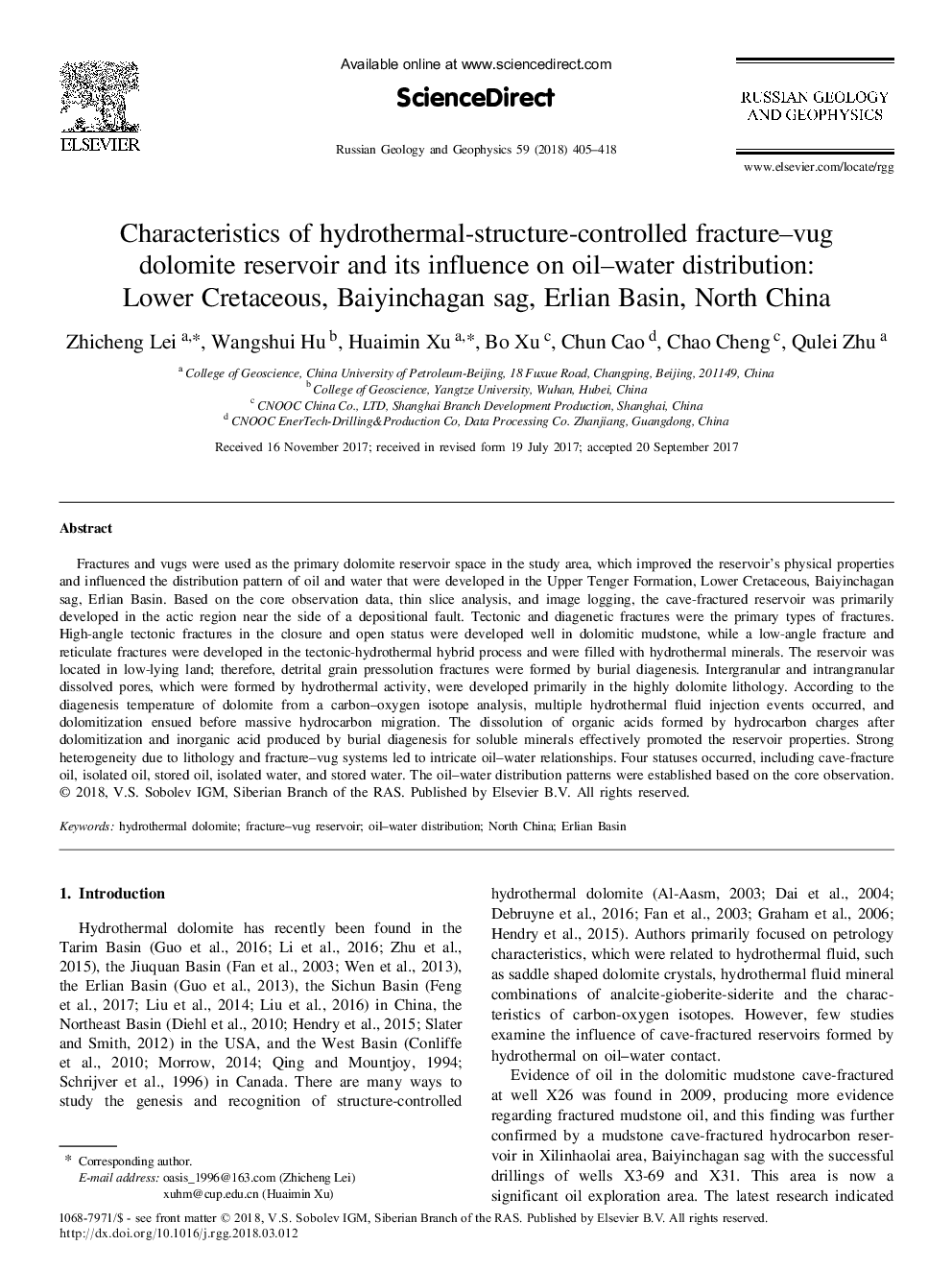| Article ID | Journal | Published Year | Pages | File Type |
|---|---|---|---|---|
| 8915191 | Russian Geology and Geophysics | 2018 | 14 Pages |
Abstract
Fractures and vugs were used as the primary dolomite reservoir space in the study area, which improved the reservoir's physical properties and influenced the distribution pattern of oil and water that were developed in the Upper Tenger Formation, Lower Cretaceous, Baiyinchagan sag, Erlian Basin. Based on the core observation data, thin slice analysis, and image logging, the cave-fractured reservoir was primarily developed in the actic region near the side of a depositional fault. Tectonic and diagenetic fractures were the primary types of fractures. High-angle tectonic fractures in the closure and open status were developed well in dolomitic mudstone, while a low-angle fracture and reticulate fractures were developed in the tectonic-hydrothermal hybrid process and were filled with hydrothermal minerals. The reservoir was located in low-lying land; therefore, detrital grain pressolution fractures were formed by burial diagenesis. Intergranular and intrangranular dissolved pores, which were formed by hydrothermal activity, were developed primarily in the highly dolomite lithology. According to the diagenesis temperature of dolomite from a carbon-oxygen isotope analysis, multiple hydrothermal fluid injection events occurred, and dolomitization ensued before massive hydrocarbon migration. The dissolution of organic acids formed by hydrocarbon charges after dolomitization and inorganic acid produced by burial di agenesis for soluble minerals effectively promoted the reservoir properties. Strong heterogeneity due to lithology and fracture-vug systems led to intricate oil-water relationships. Four statuses occurred, including cave-fracture oil, isolated oil, stored oil, isolated water, and stored water. The oil-water distribution patterns were established based on the core observation.
Related Topics
Physical Sciences and Engineering
Earth and Planetary Sciences
Geology
Authors
Zhicheng Lei, Wangshui Hu, Huaimin Xu, Bo Xu, Chun Cao, Chao Cheng, Qulei Zhu,
